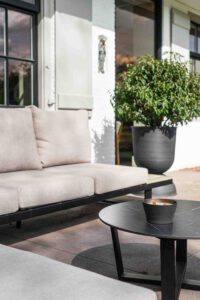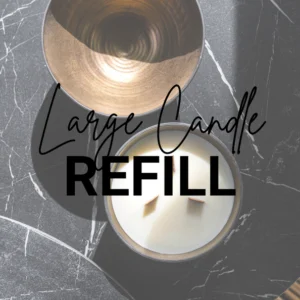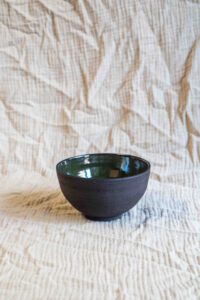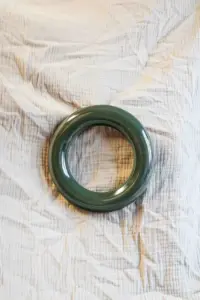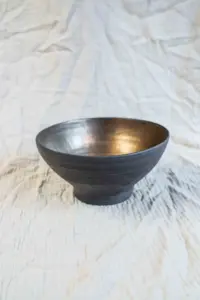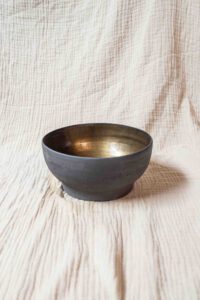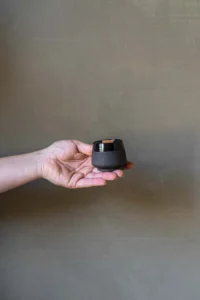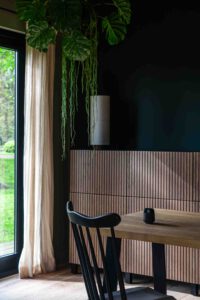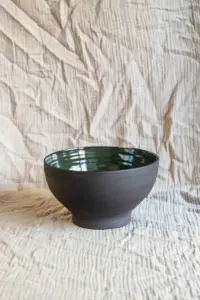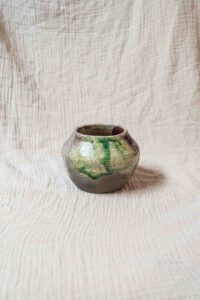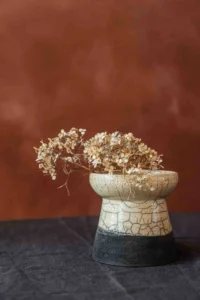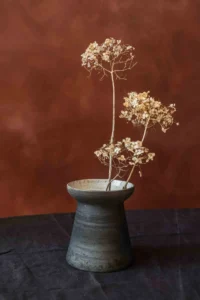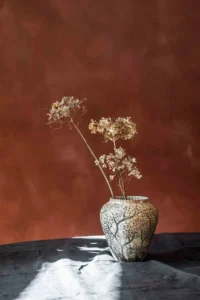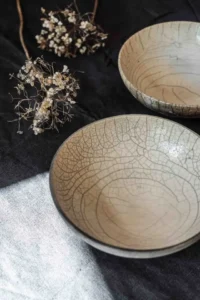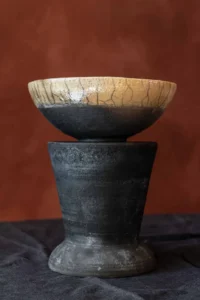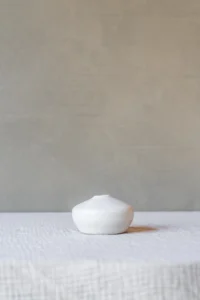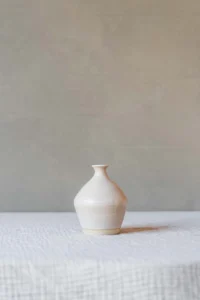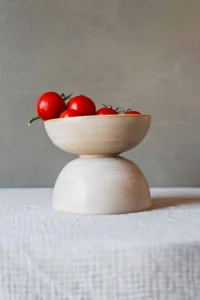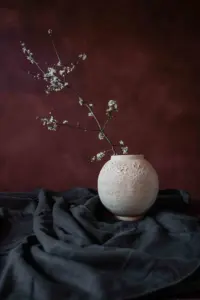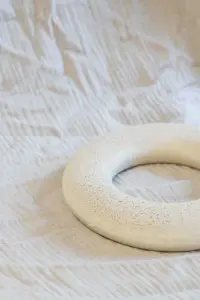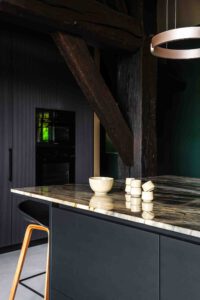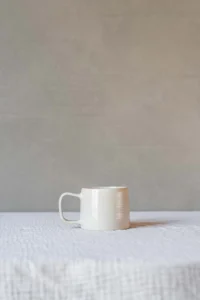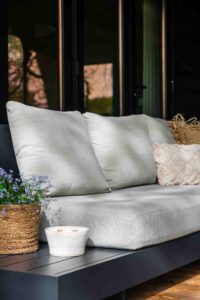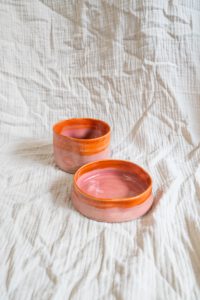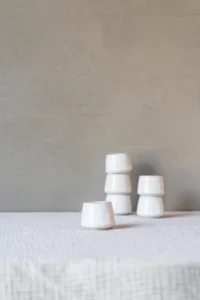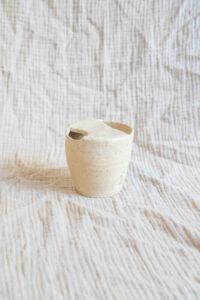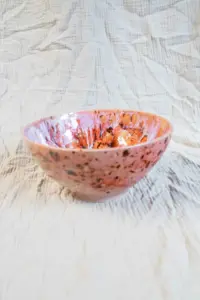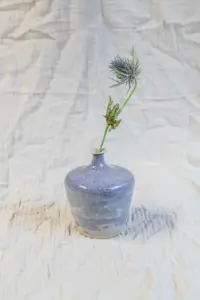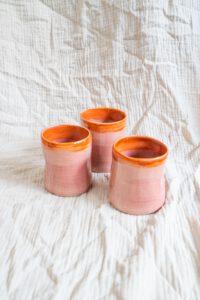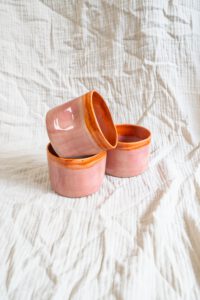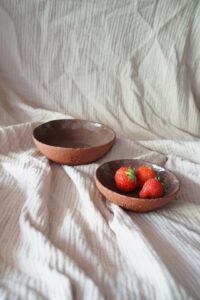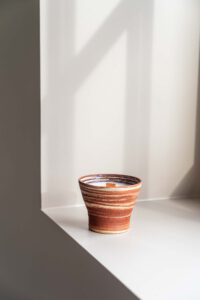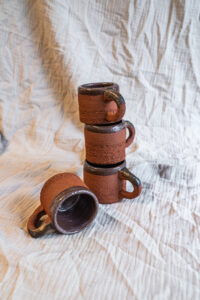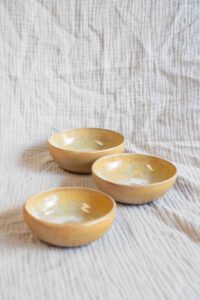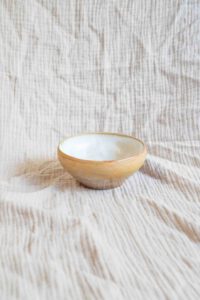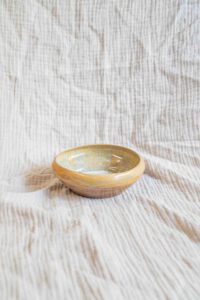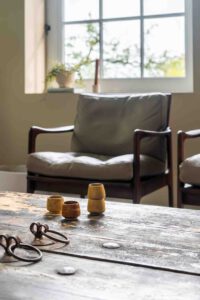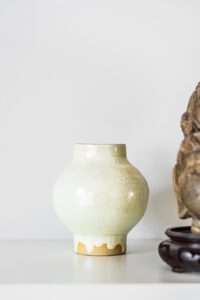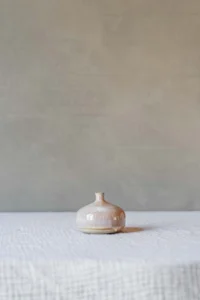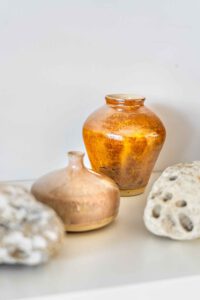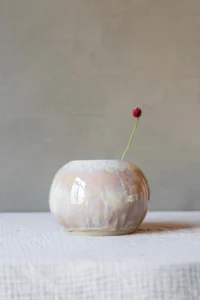Handmade ceramics
Step into the enchanting world of handmade ceramics, crafted with passion and precision.
Each piece tells a unique story, showcasing the artistry and dedication poured into every creation. From functional wares to decorative masterpieces, Iris's ceramics capture the essence of handmade charm, inviting you to experience the beauty and individuality woven into each carefully formed piece.
scroll down
Tableware
Tableware comes in a range of styles, materials, and designs, allowing individuals to express their preferences and create a visually appealing dining arrangement. High-quality tableware enhances the dining experience and adds a touch of elegance to meals.
Vases & pots
Vases and pots are vessels designed for holding and displaying flowers, plants, or decorative arrangements. They come in various shapes, sizes, and materials, catering to different preferences and styles.
Objects & decoration
Ceramics showcase a unique versatility, serving both utilitarian and decorative purposes. This dual functionality is evident in how ceramics can seamlessly transition between items designed for daily use and those crafted for decorative purposes, such as wall objects.
Umami
Umami is one of the five basic tastes, alongside sweet, salty, sour, and bitter. It is often described as a savory or meaty taste and is associated with the flavor of glutamate, an amino acid found in certain foods. Umami is commonly found in foods like meat, fish, mushrooms, tomatoes, and aged cheeses. It adds depth and richness to the overall taste experience and is considered a fundamental component of delicious and flavorful dishes.
-
Stock Out
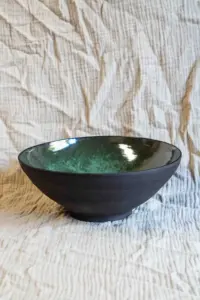
-
Stock Out

-
Sale!
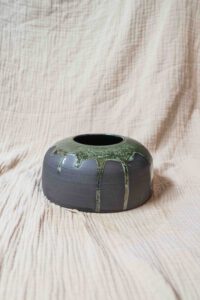
-
Stock Out
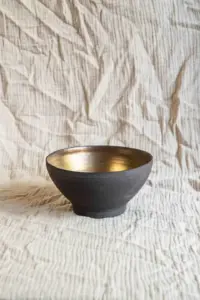
Strata
In geology, “strata” refers to layers of rock or sediment that have been deposited over time. These layers can vary in composition, thickness, and age, and they are often formed through processes like sedimentation and compaction. The study of these layers provides valuable information about the Earth’s history and the conditions under which they were deposited. “Strata” is the plural form of “stratum,” and geologists use these terms to describe the vertical layering found in rock formations.
-
Stock Out

-
Stock Out

-
Sale!

-
Stock Out

Raku
Raku ceramics firing is a traditional technique known for its extraordinary results. The process involves removing pottery from the kiln while it’s still glowing hot and placing it into a container filled with combustible materials like sawdust or newspaper. This creates a reduction atmosphere, which affects the glazes and clay in distinctive ways, resulting in striking patterns, colours, and textures. It’s a blend of craftsmanship and experimentation, finding beauty in imperfections and embracing the element of chance.
Dune
Feel the wind in your hair and the warmth of the sun on your face. The gentle breeze carries the salty scent of the ocean, invigorating your senses. The grass sways gently back and forth, producing a soothing crackling sound that harmonizes with the rhythmic ebb and flow of the sea. Close your eyes and listen to the distant calls of seabirds, adding to the symphony of nature. Breathe in deeply, taking in the fresh, crisp air. Breathe out slowly, letting go of all your worries and stress. Let the peace and serenity of nature embrace you, enveloping you in a blanket of tranquility and calm.
-
Stock Out
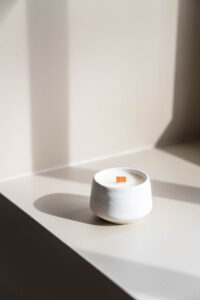
-
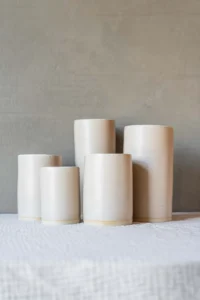
- Select options This product has multiple variants. The options may be chosen on the product page
-
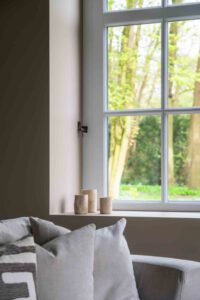
- Select options This product has multiple variants. The options may be chosen on the product page
Wildflower
A wildflower is a flower that grows in its natural state, typically not intentionally planted or cultivated. A field full of wildflowers often features a mix of various flowers and herbs, creating a diverse and vibrant tapestry of colors and shapes. These areas are often celebrated for their natural beauty and can be home to a variety of plant species, contributing to the overall biodiversity of the ecosystem. Wildflower fields are known for their charm and the spontaneous, untamed beauty they bring to the landscape.
-
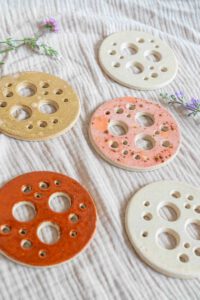
- Select options This product has multiple variants. The options may be chosen on the product page
-
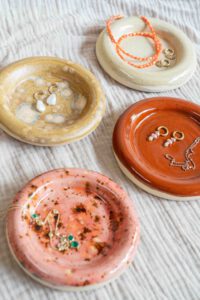
- Select options This product has multiple variants. The options may be chosen on the product page
-
Stock Out
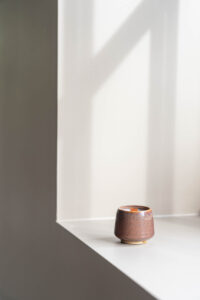
-
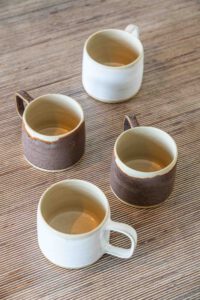
- Select options This product has multiple variants. The options may be chosen on the product page
Terra Alta
Terra Alta is a wine region located in the province of Tarragona in Catalonia, Spain. The name “Terra Alta” translates to “High Land” in English, reflecting its elevated position. This region is characterized by its mountainous terrain and is known for producing high-quality wines. The red earth in Terra Alta is a distinctive feature of the region’s terroir, contributing to the unique characteristics of the wines produced there. The soil in Terra Alta is often described as “panal,” which is a type of red, clayey soil rich in minerals. The red color comes from the presence of iron oxide in the soil.
-
Stock Out

Nebula
A nebula is a vast cloud of gas and dust in space, often illuminated by the light of nearby stars. These cosmic clouds are the birthplaces of stars and planetary systems. Nebulae can have various shapes and sizes, and they are some of the most visually stunning objects in the night sky. They can be observed with telescopes and are categorized into different types, such as emission nebulae, reflection nebulae, and planetary nebulae, each offering unique insights into the life cycle of stars.
-
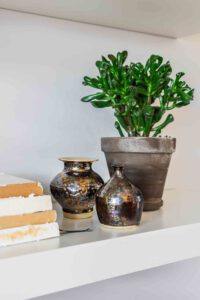
- Select options This product has multiple variants. The options may be chosen on the product page
Candles
Seconds - Wabi Sabi
The love for imperfections in ceramics, as cherished in wabi-sabi philosophy, is deeply tied to an appreciation for nature’s flaws. In wabi-sabi, irregularities in ceramics are not seen as defects but rather as unique features that give each piece its own character and story. These imperfections, such as variations in glaze application or subtle asymmetry in shape, reflect the natural world’s beauty in its unrefined state. Embracing these flaws fosters a connection to the organic, inviting contemplation and a deeper appreciation for the inherent impermanence of all things.
- Account log in
- hello@studiokapstok.nl
- /studiokapstok
- KvK 77755227
- The Netherlands
